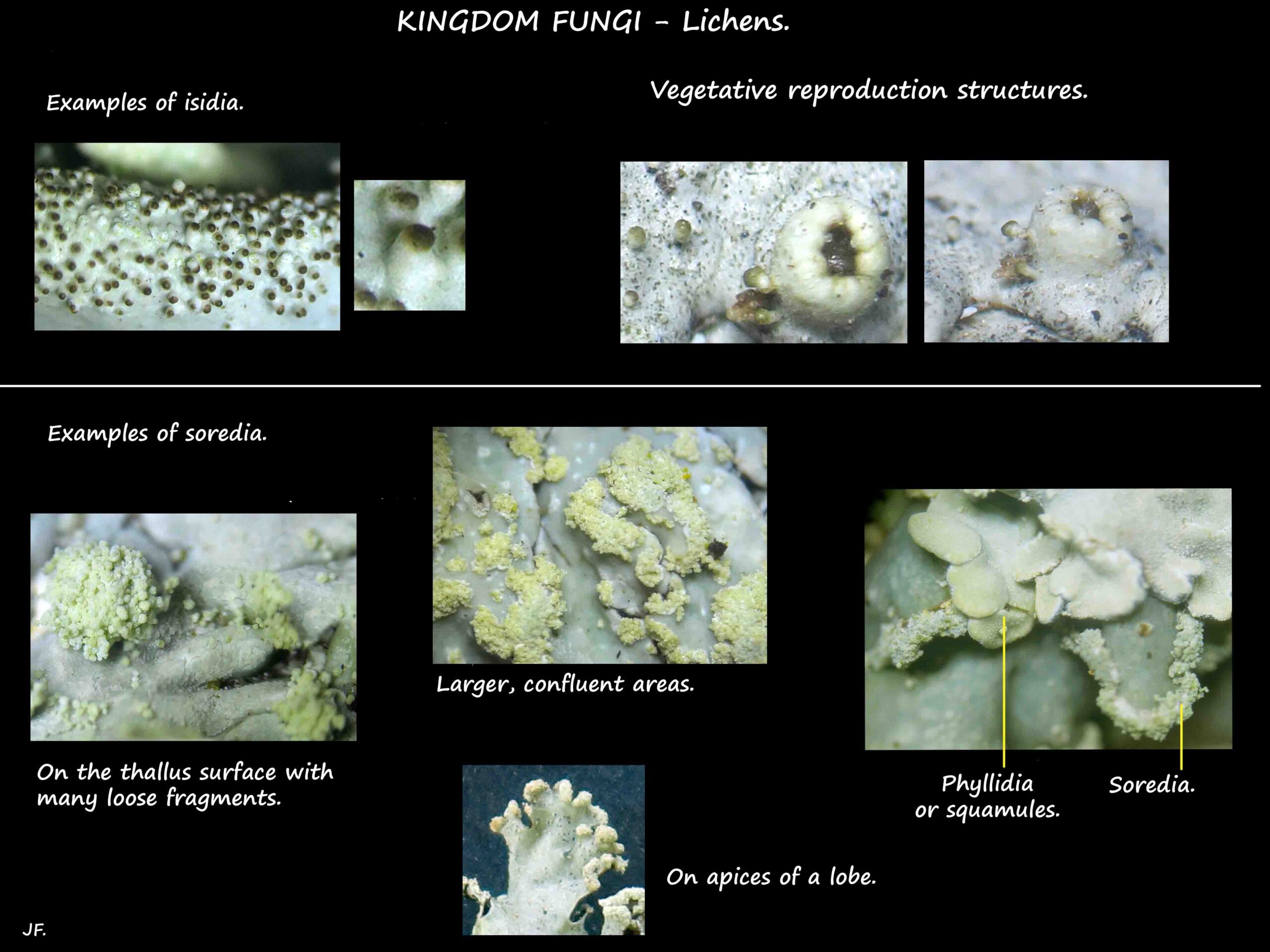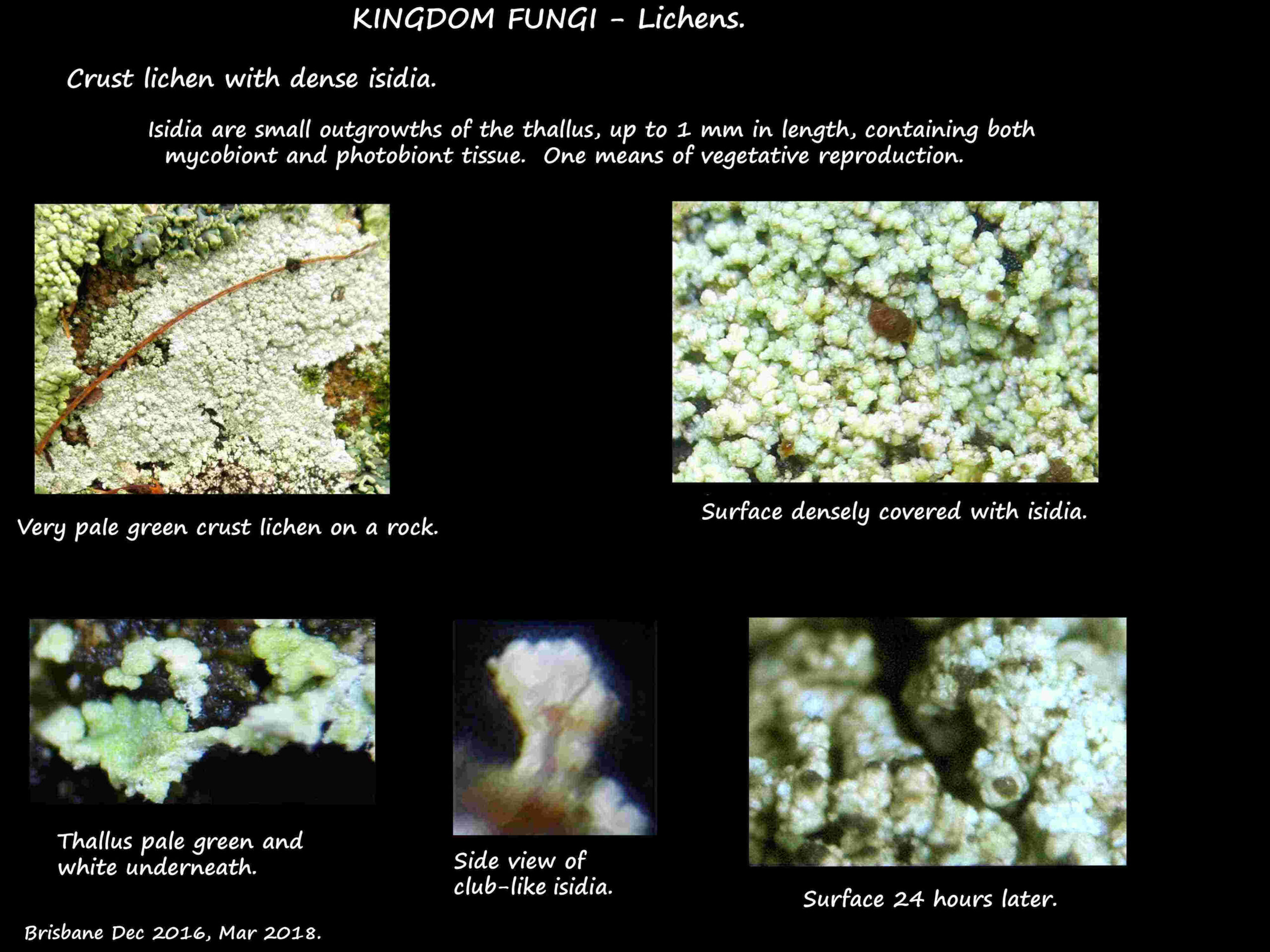Asexual reproduction.
A propagule is a fragment of thallus, with both mycobiont and photobiont tissue,
capable of forming another lichen.
The most important vegetative propagules are the isidia and soredia.
Some species have none, others have one and others have both.
They may be scattered or so dense it is hard to see the thallus.
Isidia are fragile fragments of thallus, with a cortex, usually about 1mm or less,
and may be simple, scale-like, branched like coral, cylindrical, spherical,
club-shaped or wart-like.
Soredi are much smaller, powder-like fragments of thallus.
They have fungal and photobiont tissue but no cortex.
They may be scattered anywhere on the thallus or confined to particular areas called soralia.
Soralia are areas on the thallus which have no cortex, and may be circular, oval, linear or pustular.
They may be on the surface, edges or tips of the thallus lobes.
Phyllidia are small, scale or leaf-like fragments of thallus with a cortex on both sides, usually with a
constricted base, seen on the lobe margins in foliose lichens.
Squamules appear similar to phyllidia but they only have cortex on the upper surface.
There are other small structures which require microscopy to see.
J.F.



